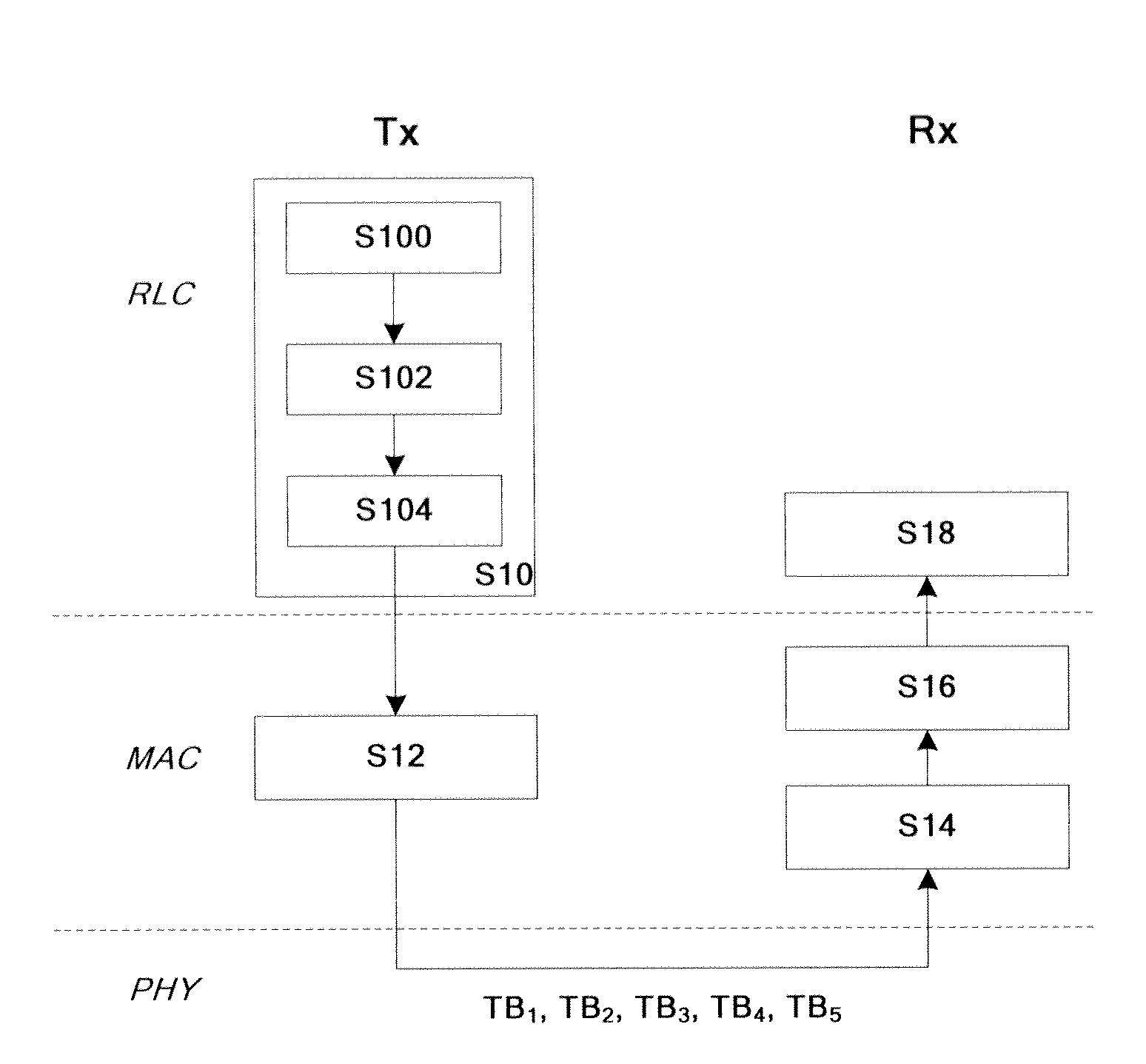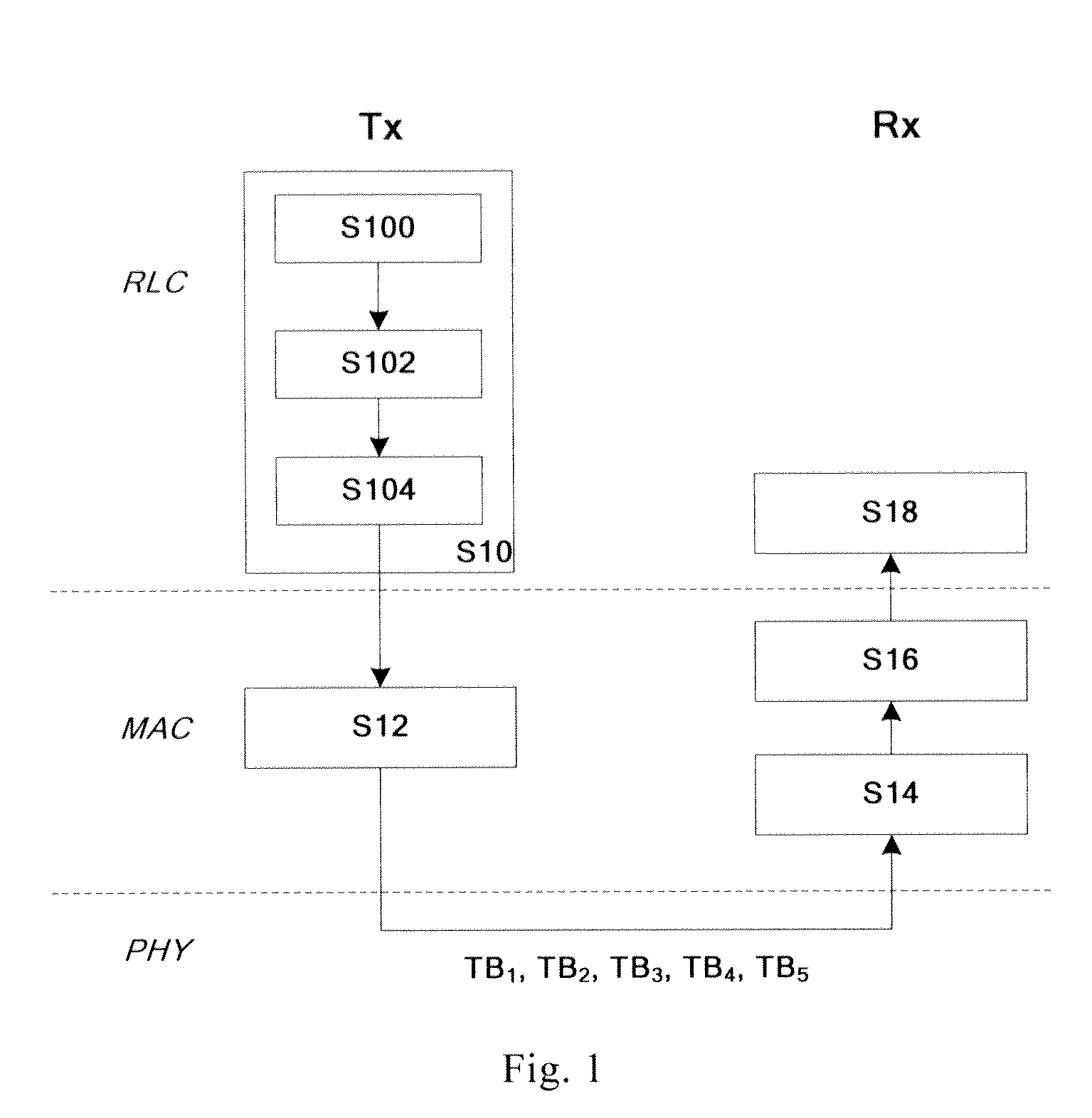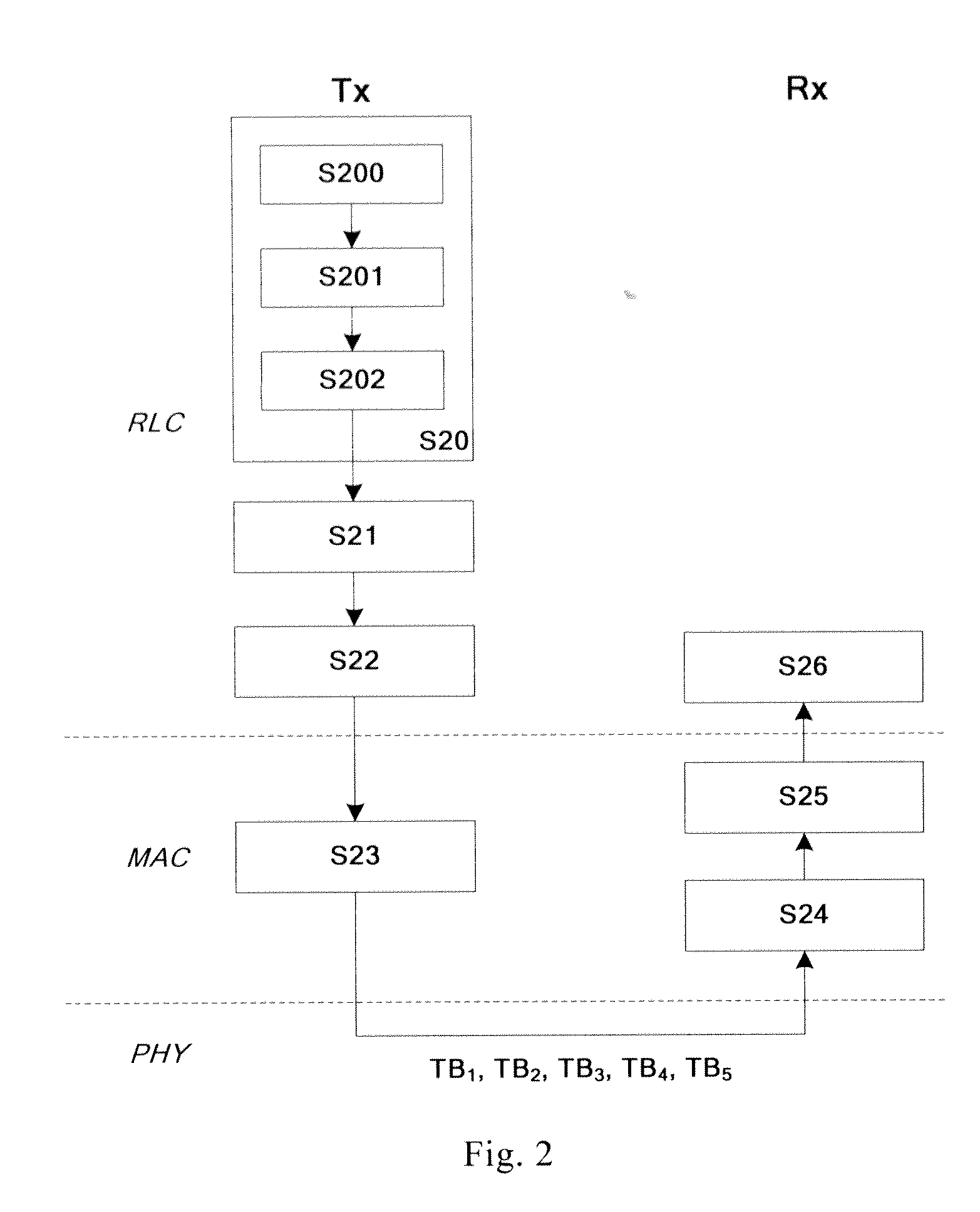Method of multi-carrier communication
- Summary
- Abstract
- Description
- Claims
- Application Information
AI Technical Summary
Benefits of technology
Problems solved by technology
Method used
Image
Examples
first embodiment
The First Embodiment
[0027]The embodiment maps the data of LCH to multiple CC in the RLC layer.
[0028]As shown in FIG. 1, first, step S10, in the RLC layer of transmitter Tx, generates respectively for each LCH, at least one middle block transmitted in at least one carrier, each of the at least one middle block comprises each data section of data of each logical channel transmitted in each carrier;
[0029]In detail, in step S100, the RLC layer obtains communication resources provided by each component carrier respectively, from the medium access control (MAC) layer;
[0030]Next, in step S102, independently to each carrier in order, according to communication resources provided by the carrier, the RLC layer allocates the unallocated data of LCH to the carrier based on defined principles. In detail, five CC are taken as examples to describe, which is CC1, CC2, CC3, CC4 and CC5.
[0031]First, using the component carrier CC1, according to the priority order of LCH, allocating minimum amount of ...
second embodiment
The Second Embodiment
[0048]The embodiment maps the data of the LCH to multiple CC in the RLC layer.
[0049]Before mapping the data of each LCH to CC, preferably, the RLC layer determines the amount of data of each LCH transmitting in the TTI respectively. As shown in FIG. 2, in the step S20, the RLC layer calculates the amount of the data of each LCH mapped to CC.
[0050]In a preferred embodiment, the RLC layer calculates the amount of the data of each LCH mapped to CC according to the priority of each LCH.
[0051]First, in the step S200, the RLC layer obtains from the MAC layer the total communication resources provided by each CC.
[0052]After that, in the step S201, according to the total communication resources and the priority order of each LCH, the RLC layer allocates minimum amount of transmitted data to be transmitted of each LCH, until the communication resources are exhausted, or all of the minimum amount of transmitted data of each LCH are allocated.
[0053]If all of the minimum am...
third embodiment
The Third Embodiment
[0070]The embodiment maps the data of LCH to multiple CCs in the MAC layer.
[0071]Before the data of each LCH is mapped to CCs, preferably, the RLC layer decides the amount of data each LCH transmitting in the TTI respectively. Similar with the second embodiment, as shown in FIG. 3, in the step S30, the RLC layer calculates the amount of the data of each LCH mapped to CC.
[0072]In a preferred embodiment, the RLC layer calculates the amount of the data of each LCH mapped to CC according to the priority of each LCH.
[0073]First, in the step S300, the RLC layer obtains the total communication resources provided by each CC from the medium access control (MAC) layer.
[0074]After that, in the step S301, according to the total communication resources and the priority order of each LCH, the RLC layer allocates minimum amount of transmitted data to be transmitted of each LCH, until the communication resources are exhausted, or all of the minimum amounts of transmitted data of...
PUM
 Login to View More
Login to View More Abstract
Description
Claims
Application Information
 Login to View More
Login to View More - R&D
- Intellectual Property
- Life Sciences
- Materials
- Tech Scout
- Unparalleled Data Quality
- Higher Quality Content
- 60% Fewer Hallucinations
Browse by: Latest US Patents, China's latest patents, Technical Efficacy Thesaurus, Application Domain, Technology Topic, Popular Technical Reports.
© 2025 PatSnap. All rights reserved.Legal|Privacy policy|Modern Slavery Act Transparency Statement|Sitemap|About US| Contact US: help@patsnap.com



